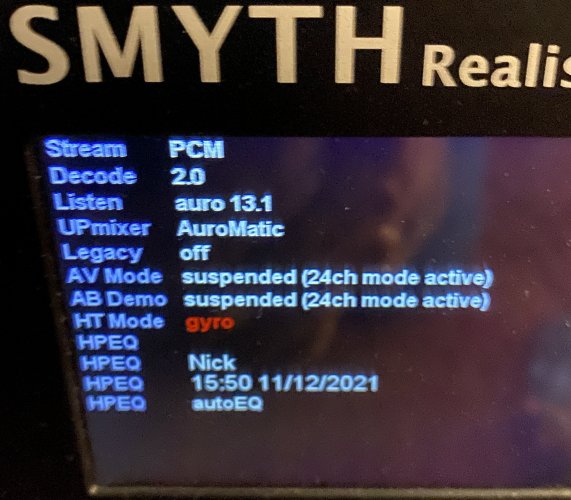I was a bit underwhelmed by the preloaded PRIRs
Did you create a manLOUD HPEQ specifically for this room?
The manLOUD procedure helps a lot to personalize a PRIR that is not made with your ears.
Seems that people still don't get this, and why this is needed and how it's done, although it's relatively good documented in the video.
I only use the Surrey room with manLOUD HPEQs with my Audeze LCD2 and my Hifiman In Ears.
The result with the LCD2 is quite good, I'd say 80 percent of a persoanlized PRIR, with the In Ears maybe 70%.
In the manLOUD process you have to select the specific PRIRyou want to make the manLOUD HPEQ for and you have to select loudspeakers fromt that PRIR, through which you listen to the band limited noise. You have to select Equal Loudness 80 which should be played at 80 dB (you have to guess this, 80 dB noise is quite loud already). Each noise band has to play at the same volume, like it would when listening to real loudspeaker with a linear frequency response. You have to bring each noise subband to the same volume as the others by listening and comparing, not totally easy, but feasible.
From the PRIR you can select the L+R speakers, the C speaker or L+C+R.
So you're manually correct your HRTF for that or these speakers. Normally the real HRTF for each speaker (direction) would be different, so it's a compromise and the front speakers are the most important.
For the manLOUD process the Realiser takes only the direct sound part of the impulse response, not the reverb. Therefore you don't hear the loudspeaker out of your head while doing the HPEQ.
This is a first stage in the direction of personalisation of a different PRIR (or BRIR). On the exchange website they will do this automatically by comparing the part of the impuls response without the reverb to a PRIR that you upload and this has to be personalised to you and speaker positions has to correspond to those in the PRIR you want to personalise.
The HRTF that you correct only for the fronts with the manLOUD process will be corrected automatically for every speaker direction in the automatic process, so the result will be quite good I think and satisfy many people already.
But even with the manLOUD process many people could already be happy with the factory PRIRs, but it's absolutely mandatory to do the manLOUD process with the PRIR. And since you have 3 possibilities of selecting loudspeakers from the PRIR you should try all of them if the first try is not satisfactory. This happened with my In Ears at first. For my LCD2 I only tried L+R and am quite satisfied (haven't tried the other options though, maybe they're even better?). For the In Ears I also tried L+R at first but the result was not good. Then I did it again with C and L+C+R. Both delivered similar and far better results than only L+R. Still a little bit harsh with voices sometimes but OK.
If I find some time I may write a tutorial for this, because I think it's important.
Listening to the factory PRIRs with an autoHPEQ or flat HPEQ is of no use and will deliver horrible results for the majority of people I think.
With the manLOUD procedure I had to reduce some bands 10-15 dB for example! So you can imagine how it sounds when 1 kHz or so will be 15 dB too loud...
With the manLOUD process the Smyths already implemented a very cool and handy feature which I think many people don't yet understand completely.












